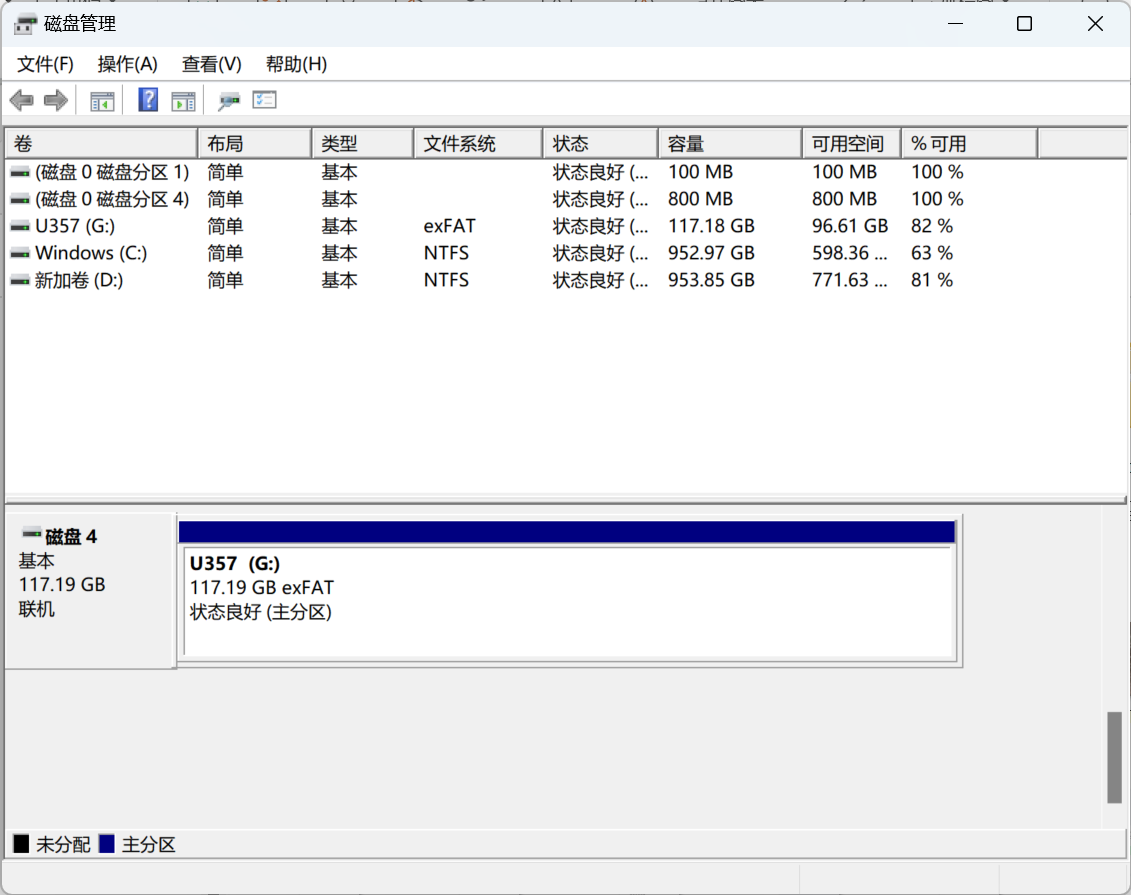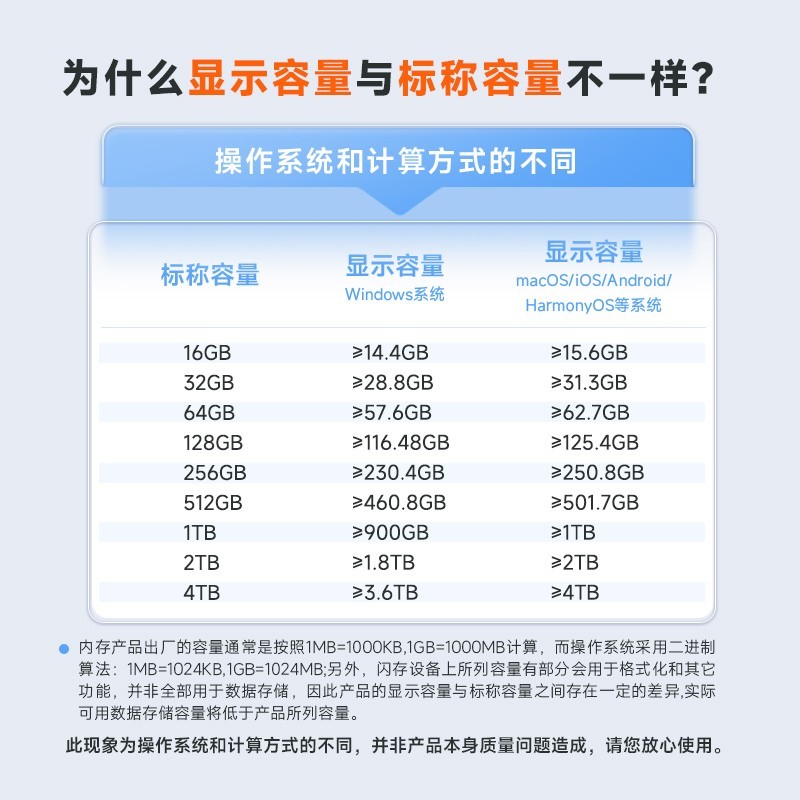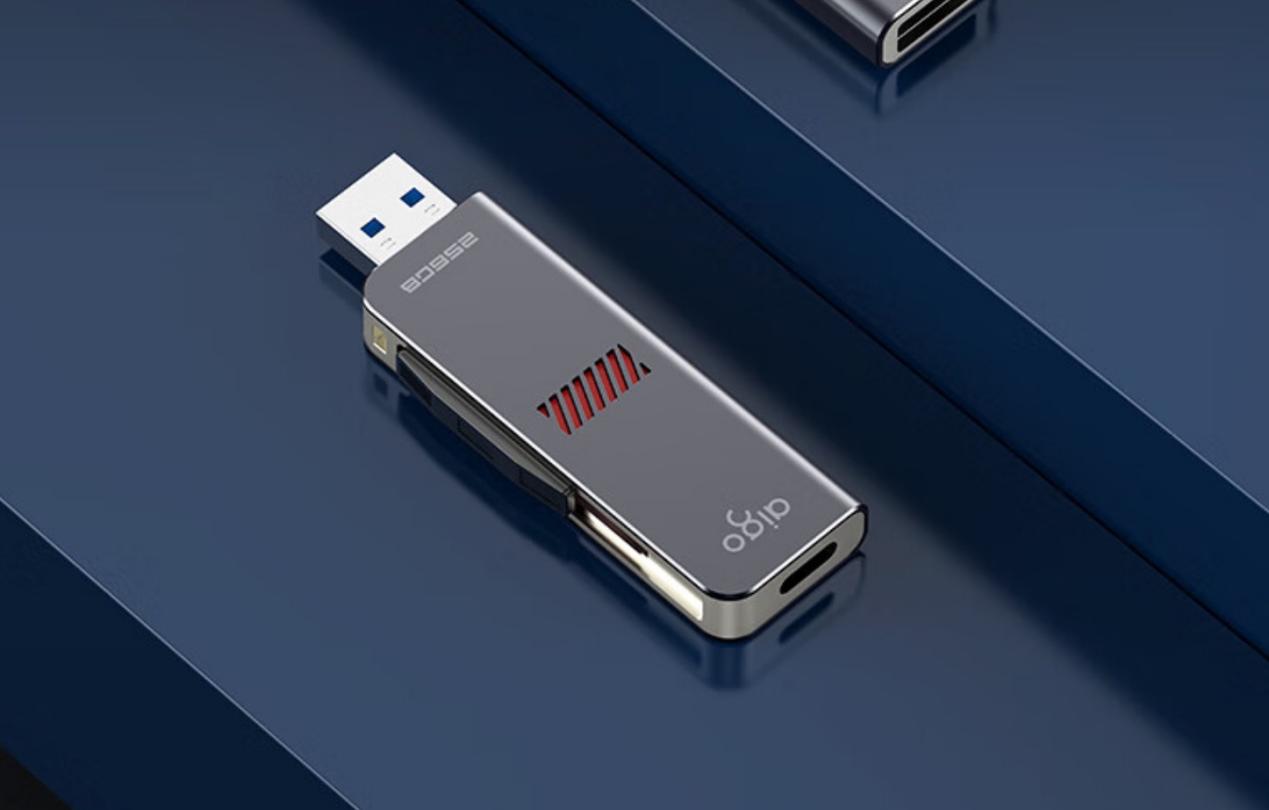
Recently, we received such a question in the question and answer session of ZOL APP. It is likely that this friend bought a 128GB USB drive , but the available capacity on the computer is only 116GB, I want to know if I bought a fake. Although mobile storage devices have been popular for many years, there are still many people who hold this question. Today, we will explain this problem to you at one time.
In fact, this is a "legacy of history".
At present, the most commonly used Windows operating system uses 1024 carry, while Linux, Unix and macOS use 1000 carry. In the storage industry, the International System of Units (SI) standard of 1KB=1000 bytes is usually used to describe the capacity, and the instructions of some storage devices often have such marks as 1GB=1 billion bytes. For the same file or storage device, there will be differences in volume and capacity recognition under different operating systems.
However, the root cause is still related to binary and decimal systems. For example, in the international standard of the International System of Units (SI), there are detailed definitions of multiples and fractions of a unit. For example, 1000=K and 1000000=M of the benchmark are all powers based on 10. However, the bottom layer of the computer is a digital circuit that performs binary operations. For example, JEDEC in memory always uses the carry of 1024, which is the 10th power of 2.

In order to facilitate the description of large digital powers based on 2, the International Electrotechnical Commission (IEC) has developed a new digital prefix iB for 1024 carry, such as changing KB into KiB, MB into MiB, etc. Although this capacity identification is not very common, it is easy to distinguish 1000 from 1024 carry. However, since this standard was proposed only in 1998, many operating systems and Software The manufacturer still uses the representation of 1KB=1024 bytes. Almost all operating systems can see KB, not KiB.
The same goes for storage devices aigo For example, the newly launched dual interface USB stick U357 of Patriot shows the 128GB capacity as 117.19GB in Windows. In MacOS, it is 125.83GB, which is close to the nominal capacity of 128GB.

Aigo U357 displays capacity in Windows system

Aigo U357 displays capacity in macOS system
The actual capacity of the aigo U357 has reached 92% of the nominal capacity, which is very conscientious. It is also equipped with Type-C and USB-A dual interfaces, and its read/write speed has exceeded 440MB/s. The core storage element flash memory chip uses high-quality good die particles, so it is eye-catching in terms of performance, quality, and ease of use.
Therefore, the nominal capacity and the actual capacity of the storage device are, in the final analysis, the conversion difference between 1024 carry and 1000 carry. Speaking of this, I believe that many people want to know the actual capacity of the storage devices they purchase. Here we recommend two calculation methods. One is the nominal capacity x1000/ 1024?, Another calculation method is the nominal capacity x0.9. For example, the actual capacity of 128GB in Windows is about 115.2GB.

This also means that the larger the nominal capacity of the storage device, the more capacity "lost". For example, the usable capacity of an 8TB storage device is only about 7.3TB, and the products launched by the storage manufacturer may also have capacity differences between individuals. However, you need not worry. According to the national standard, the actual capacity of the storage device needs to reach 90% of the nominal capacity to be qualified, The actual capacity of aigo patriot is more than 90% under both Windows and MacOS systems, so it can be used safely.
This article is an original article. If it is reproduced, please indicate the source: Does the nominal capacity of the USB stick not match the actual capacity? It's really not cutting corners https://diy.zol.com.cn/874/8743924.html
https://diy.zol.com.cn/874/8743924.html
diy.zol.com.cn
true
Zhongguancun Online
https://diy.zol.com.cn/874/8743924.html
report
two thousand three hundred and five
Recently, we received a question in the Q&A of ZOL APP, which probably said that the friend bought a 128GB USB flash drive, but the available capacity on the computer was only 116GB, to see if he had bought a fake. Although mobile storage devices have been popular for many years, there are still many people who hold this question. Today, we will explain this problem to you at one time. In fact, this is a "























